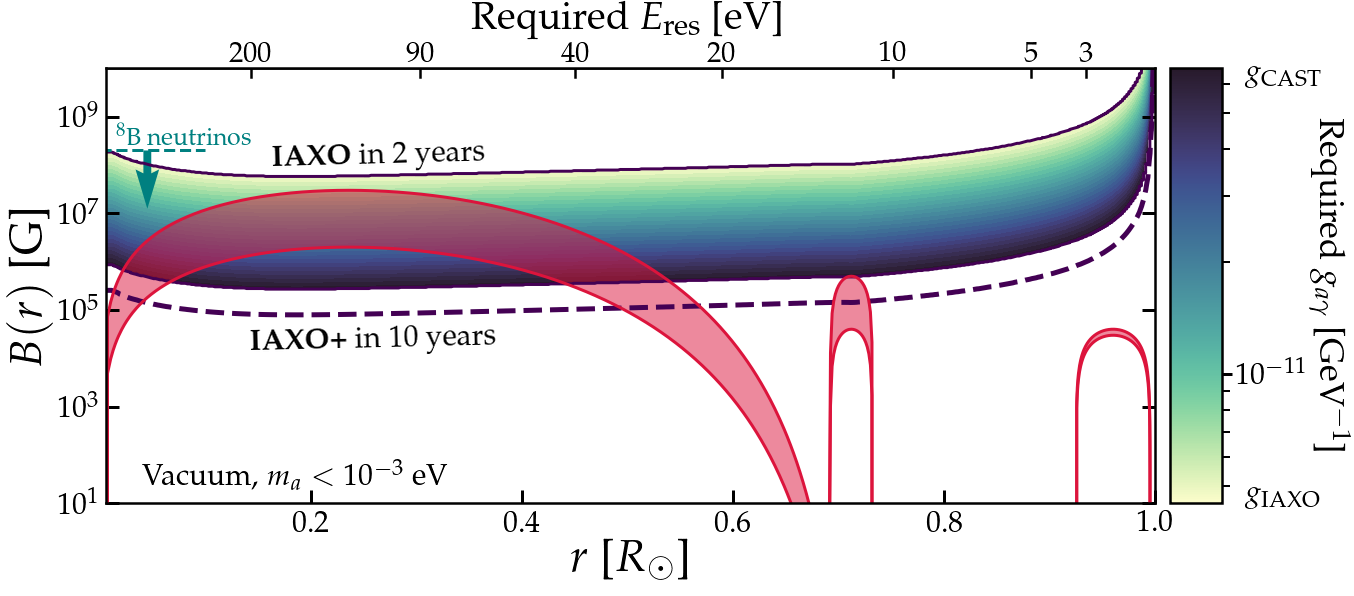Axion helioscopes as solar magnetometers
Axion helioscopes search for solar axions and axion-like particles via inverse Primakoff conversion in strong laboratory magnets pointed at the Sun. Anticipating the detection of solar axions, we determine the potential for the planned next-generation helioscope, the International Axion Observatory (IAXO), to measure or constrain the solar magnetic field. To do this we consider a previously neglected component of the solar axion flux at sub-keV energies arising from the conversion of longitudinal plasmons. This flux is sensitively dependent to the magnetic field profile of the Sun, with lower energies corresponding to axions converting into photons at larger solar radii. If the detector technology eventually installed in IAXO has an energy resolution better than 200 eV, then solar axions could become an even more powerful messenger than neutrinos of the magnetic field in the core of the Sun. For energy resolutions better than 10 eV, IAXO could access the inner 70% of the Sun and begin to constrain the field at the tachocline: the boundary between the radiative and convective zones. The longitudinal plasmon flux from a toroidal magnetic field also has an additional 2% geometric modulation effect which could be used to measure the angular dependence of the magnetic field.
PDF Abstract